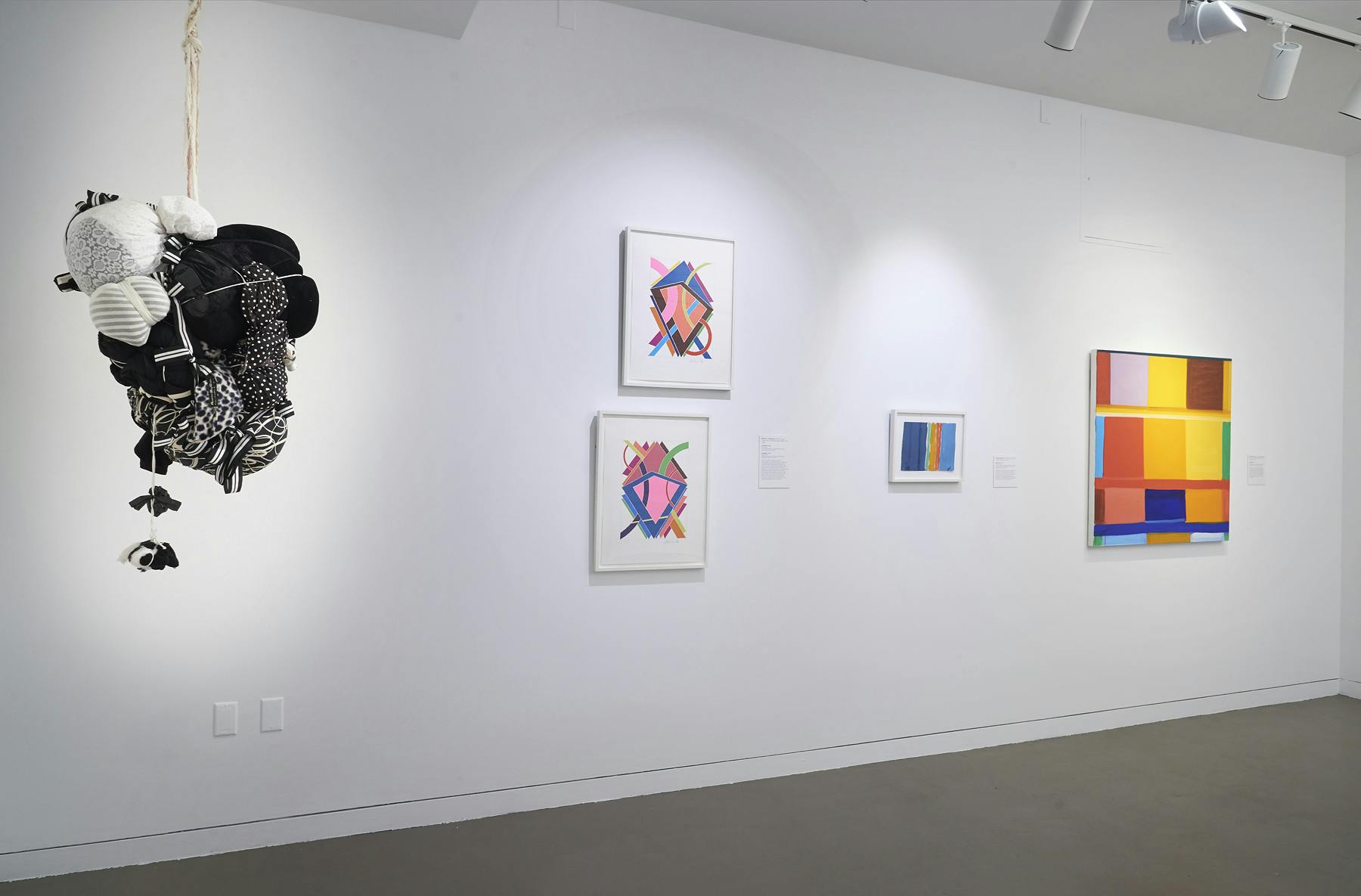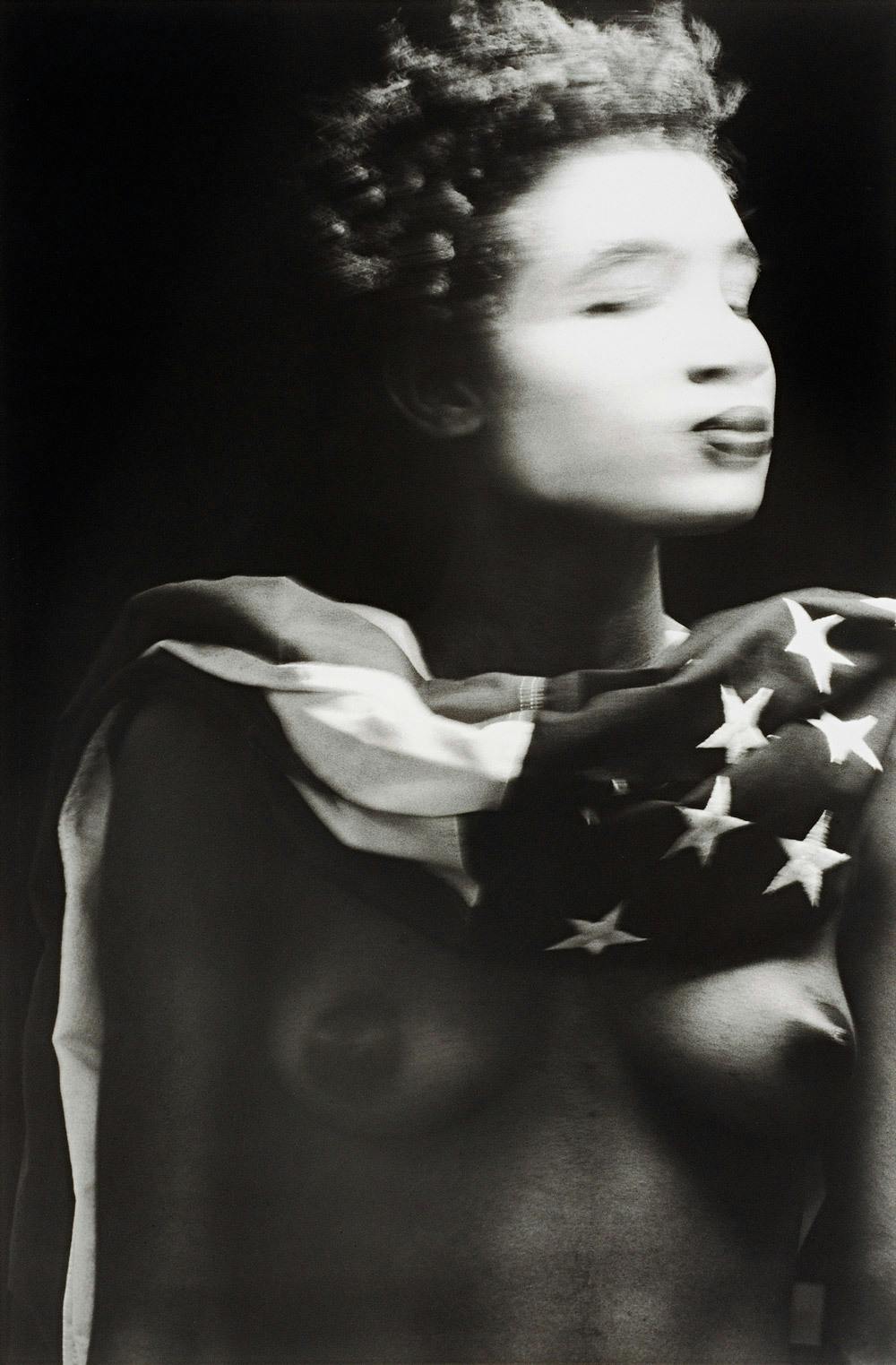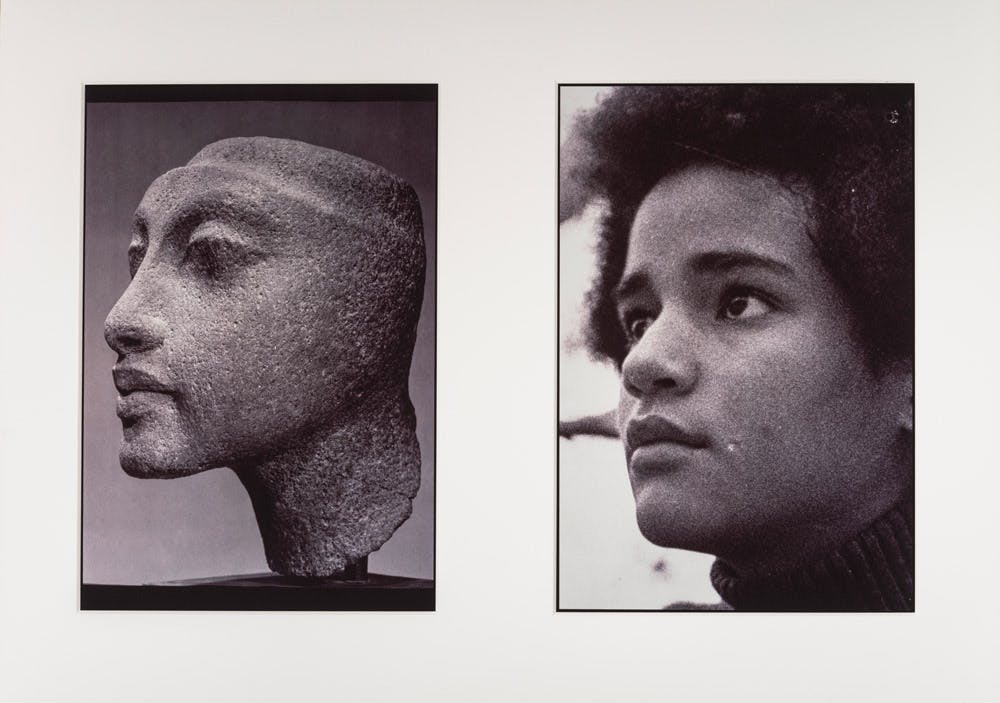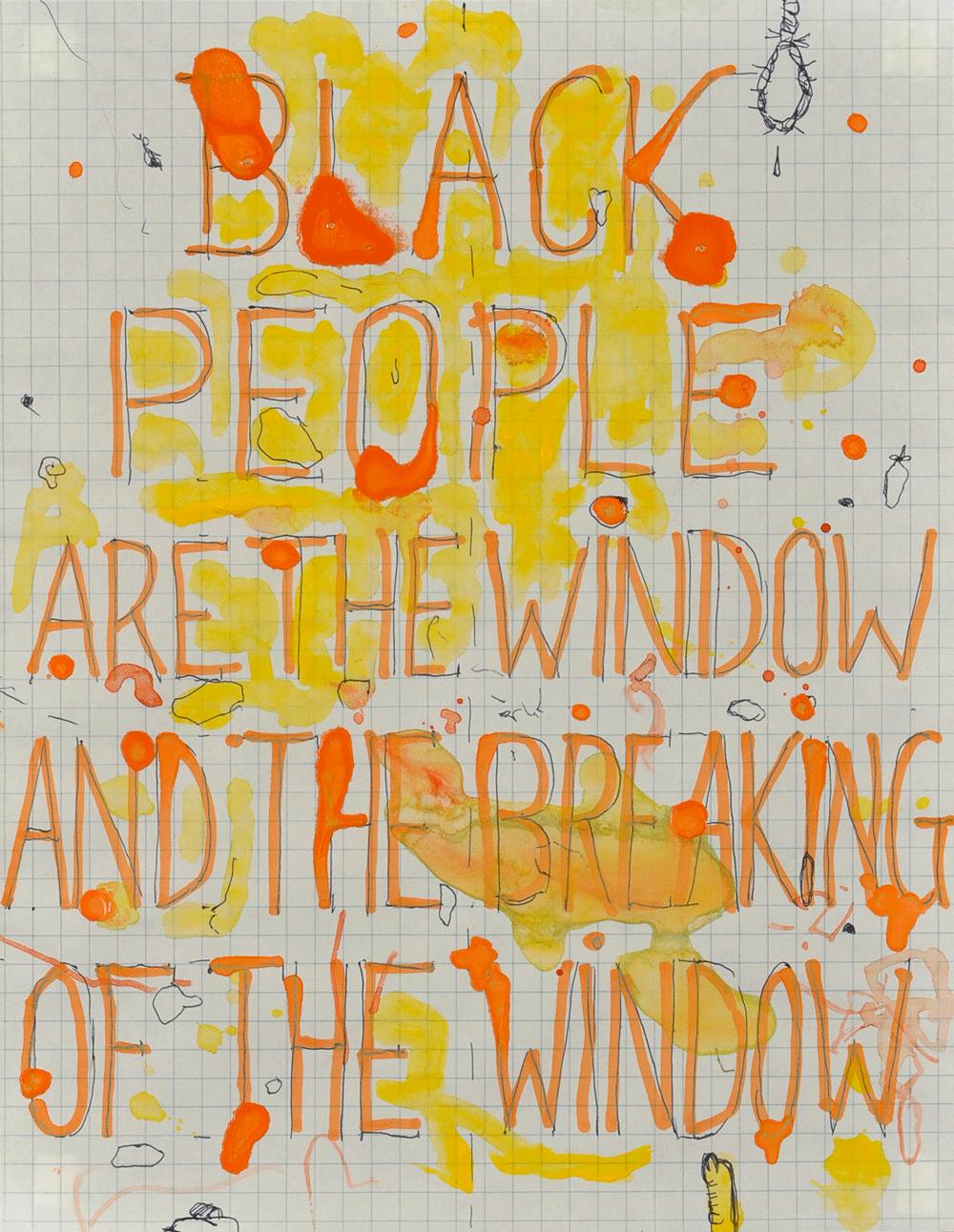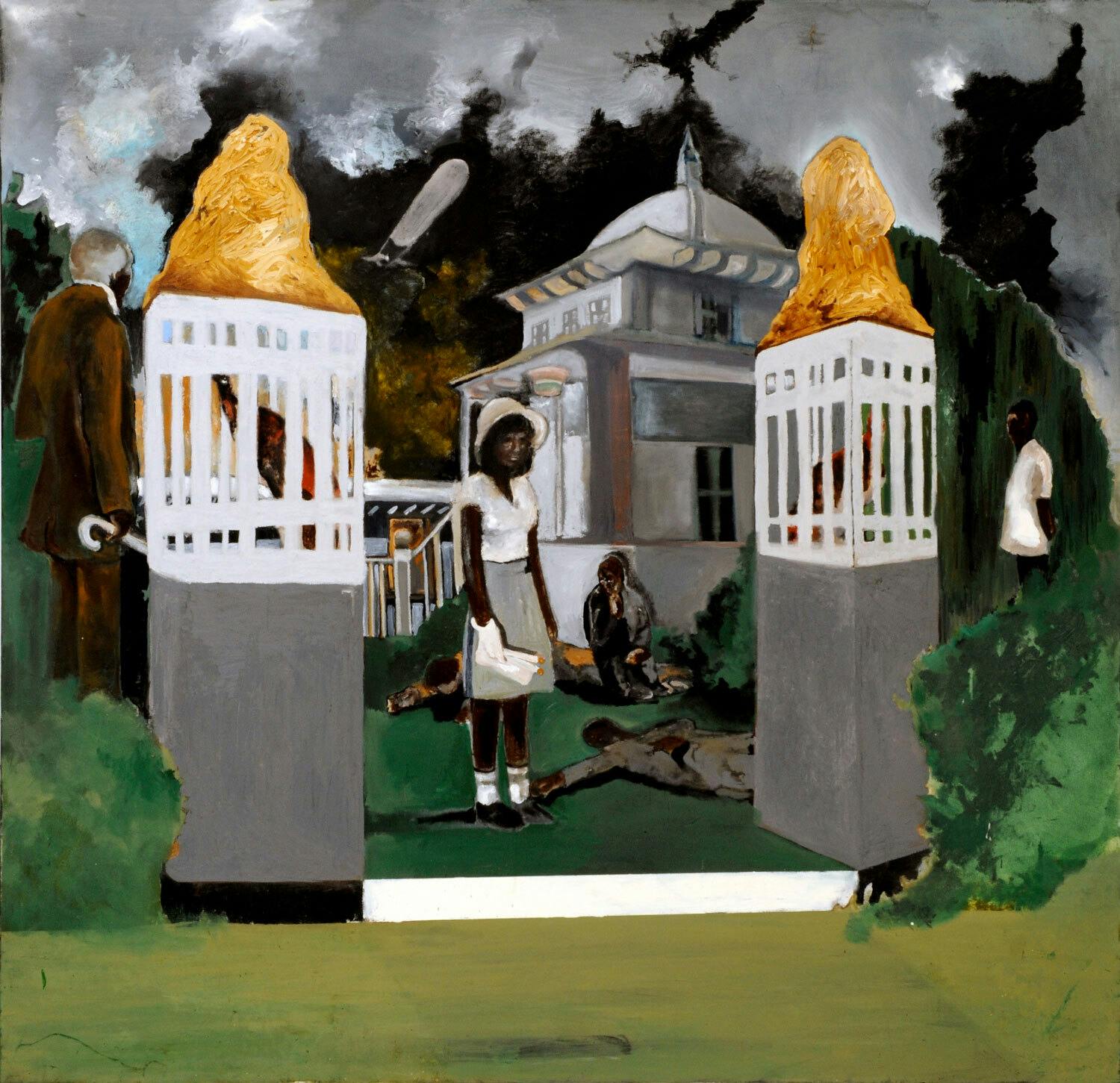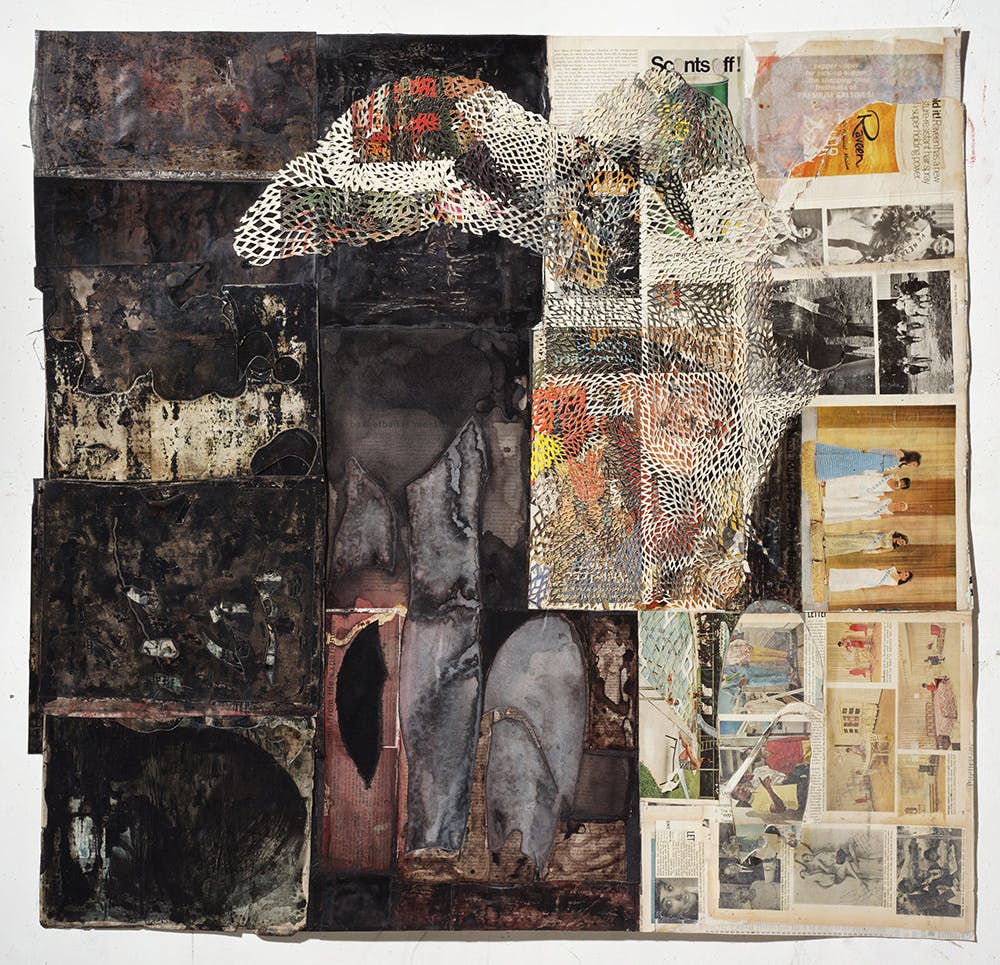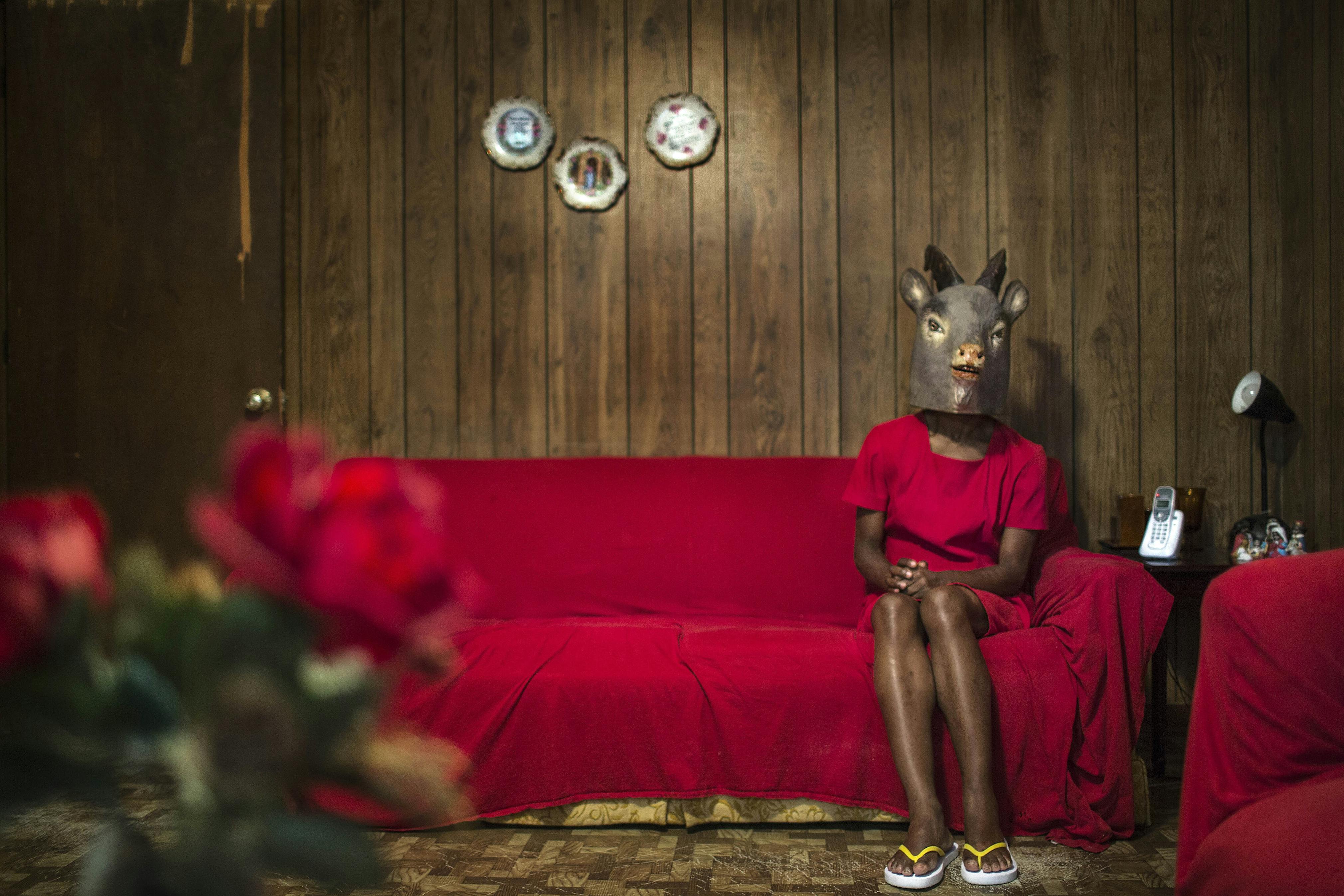Kerry James Marshall
(b. 1955)1985–86 Artist in ResidenceKerry James Marshall reinterprets compositions, styles, and tropes to recontextualize and reinscribe the Black figure within historical narratives.
Biography
Kerry James Marshall foregrounds Black subjects in his wide-ranging painting practice to challenge, correct, and expand the canon of Western art history. Born in Birmingham, Alabama, he moved with his family to Los Angeles in 1963, where they first lived in Watts and later in South Central.
Throughout his childhood, he maintained a steady interest in art and sketched constantly. In junior high school, a teacher noticed his passion for drawing and recommended he take an art class at Otis Art Institute, where he learned about and met the Social Realist artist Charles White. Marshall entered Los Angeles City College in 1975, and arrived at Otis to complete his undergraduate degree two years later. Despite classes with White—whose work continued to inspire Marshall—he was disappointed by program’s emphasis on conceptualism and abstraction.
In 1980, Marshall began working in the figurative style for which he is best known today. Inspired in part by Ralph Ellison’s novel Invisible Man (1952), his Black subjects are barely indistinguishable from the black background of the canvas. As Marshall remarks, “You have to demonstrate that black is richer than it appears to be, that it is not just darkness but a color.” In 1985, he arrived in New York and began a residency at the Studio Museum in Harlem. He has since honed his unique approach, creating dynamic portraits that emphasize the simultaneous presence and absence of Black people in representations of US society. Since 1993, he has taken up history painting through layered references to art history and exploration of figures such as Harriet Tubman and Nat Turner.
Marshall earned his BFA from the Otis Art Institute. He received awards such as a MacArthur Fellowship (1997); the Wolfgang Hahn Prize from the Gesellschaft für Moderne Kunst am Museum Ludwig (2014); and the W.E.B. Du Bois Medal (2019). The Studio Museum presented his work in numerous exhibitions, including When the Stars Begin to Fall: Imagination and the American South (2014); Black: Color, Material, Concept (2015); and Regarding the Figure (2017).
Exhibitions and Events
Kerry James Marshall
(b. 1955)1985–86 Artist in ResidenceKerry James Marshall reinterprets compositions, styles, and tropes to recontextualize and reinscribe the Black figure within historical narratives.
Frankenstein, 2010
Biography
Kerry James Marshall foregrounds Black subjects in his wide-ranging painting practice to challenge, correct, and expand the canon of Western art history. Born in Birmingham, Alabama, he moved with his family to Los Angeles in 1963, where they first lived in Watts and later in South Central.
Throughout his childhood, he maintained a steady interest in art and sketched constantly. In junior high school, a teacher noticed his passion for drawing and recommended he take an art class at Otis Art Institute, where he learned about and met the Social Realist artist Charles White. Marshall entered Los Angeles City College in 1975, and arrived at Otis to complete his undergraduate degree two years later. Despite classes with White—whose work continued to inspire Marshall—he was disappointed by program’s emphasis on conceptualism and abstraction.
In 1980, Marshall began working in the figurative style for which he is best known today. Inspired in part by Ralph Ellison’s novel Invisible Man (1952), his Black subjects are barely indistinguishable from the black background of the canvas. As Marshall remarks, “You have to demonstrate that black is richer than it appears to be, that it is not just darkness but a color.” In 1985, he arrived in New York and began a residency at the Studio Museum in Harlem. He has since honed his unique approach, creating dynamic portraits that emphasize the simultaneous presence and absence of Black people in representations of US society. Since 1993, he has taken up history painting through layered references to art history and exploration of figures such as Harriet Tubman and Nat Turner.
Marshall earned his BFA from the Otis Art Institute. He received awards such as a MacArthur Fellowship (1997); the Wolfgang Hahn Prize from the Gesellschaft für Moderne Kunst am Museum Ludwig (2014); and the W.E.B. Du Bois Medal (2019). The Studio Museum presented his work in numerous exhibitions, including When the Stars Begin to Fall: Imagination and the American South (2014); Black: Color, Material, Concept (2015); and Regarding the Figure (2017).





